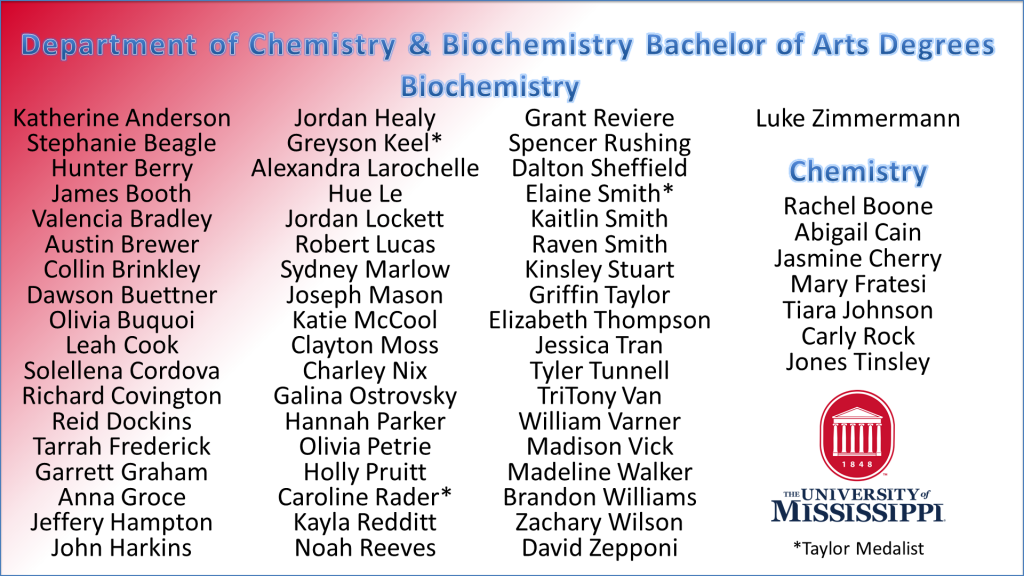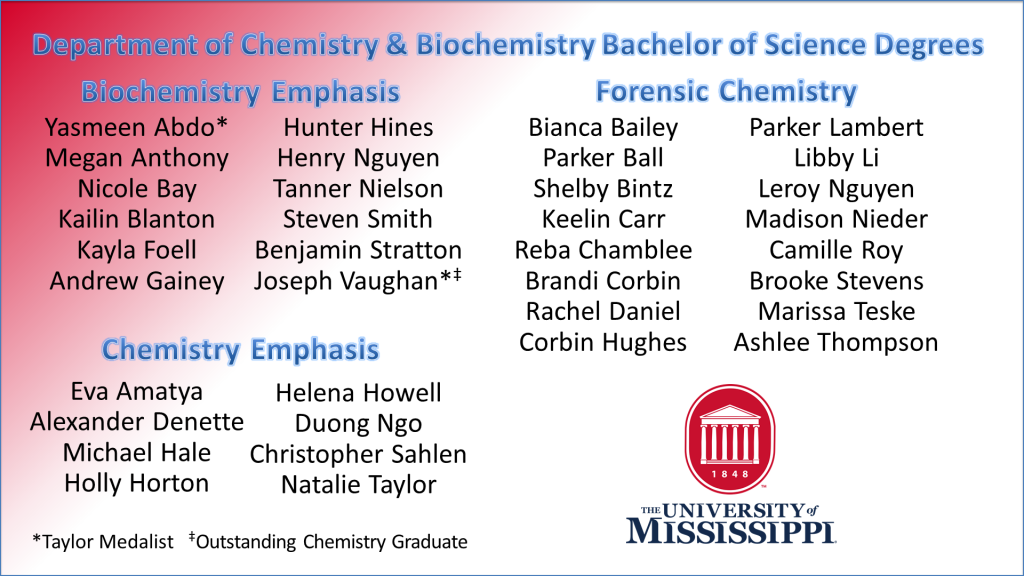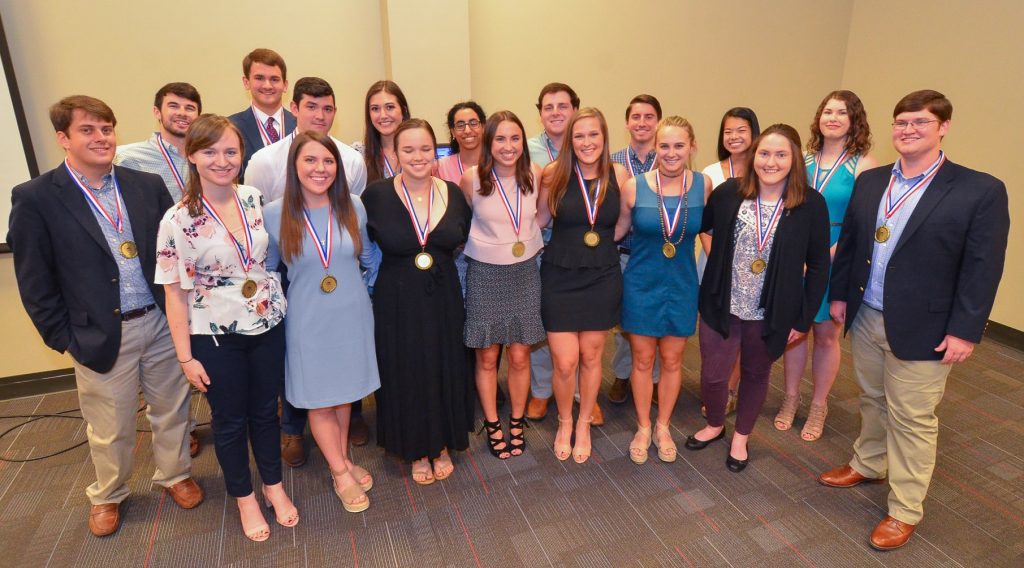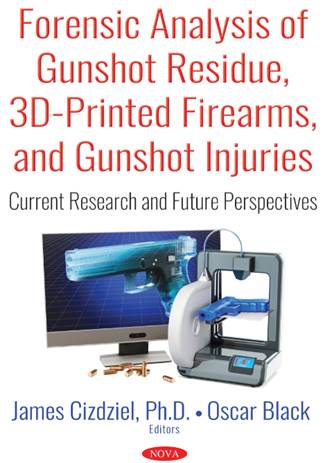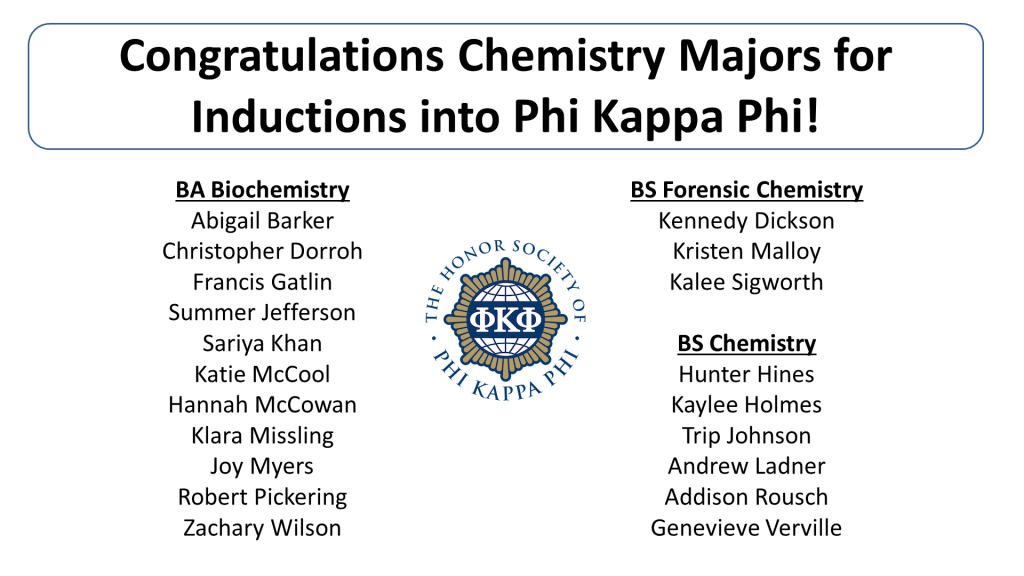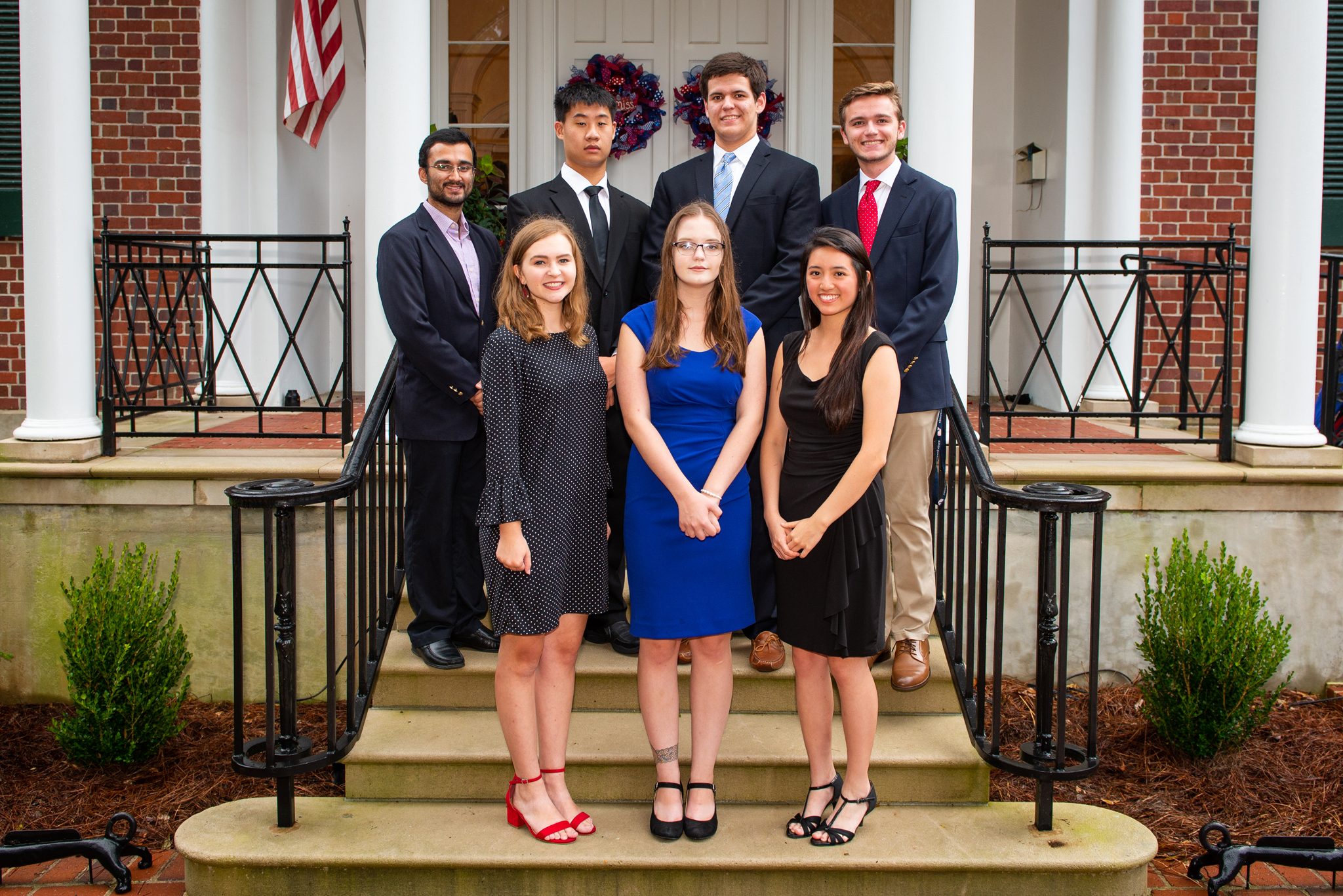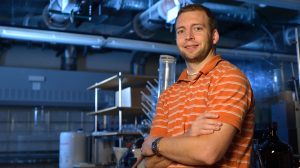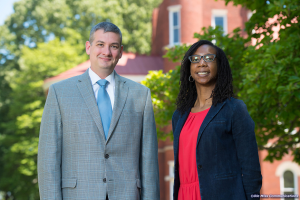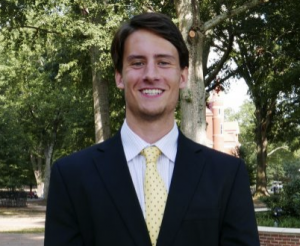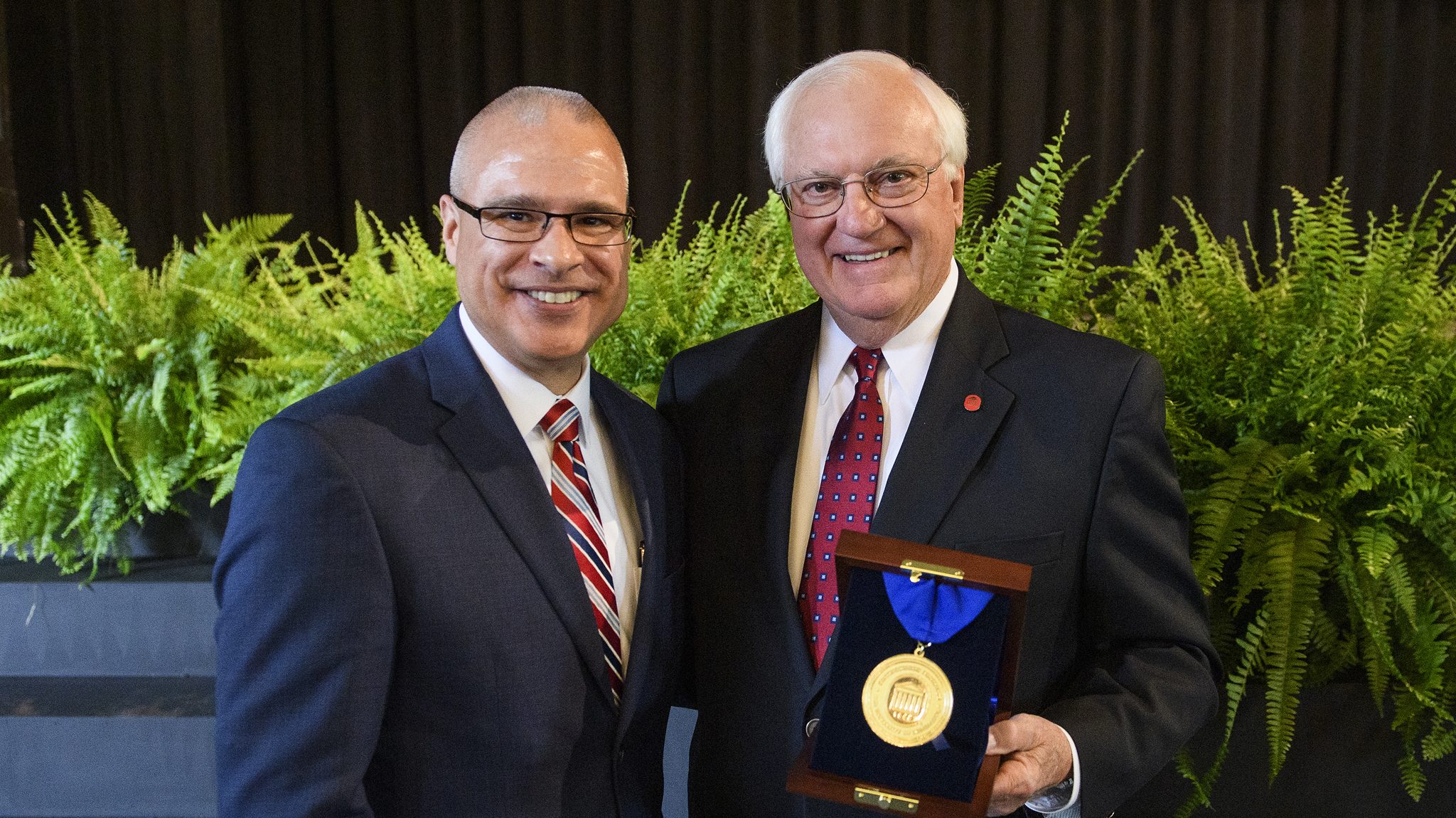
UM Provost Noel Wilkin (left) congratulates Charles Hussey, associate dean for research and graduate education in the College of Liberal Arts and professor of chemistry and biochemistry, on being named a Distinguished Professor during the end-of-the-semester faculty meeting Friday (May 10) in Fulton Chapel. Photo by Thomas Graning/Ole Miss Digital Imaging Services.
OXFORD, Miss. – Chemistry faculty member Charles L. Hussey was appointed a Distinguished Professor during the end-of-the-semester faculty meeting Friday (May 10, 2019) in Fulton Chapel.
Charles Hussey is associate dean for research and graduate education in the College of Liberal Arts and professor of chemistry and biochemistry. The Distinguished Professor appointment is an honorific title started by UM in 2018 that recognizes the best faculty with sustained excellence at Ole Miss. The award was created in response to the university’s strategic initiative to develop a post-professorial recognition. No more than 5 percent of eligible faculty can be appointed as a Distinguished Professor.
“The accomplishments of the university are really the accomplishments of its people,” Provost Noel Wilkin said. “This award allows us to acknowledge the outstanding contributions that our most accomplished faculty have made to their fields.
“The ways in which [these professors] have shaped their disciplines and influenced the world is amazing, and they are very deserving of this award.”
Hussey joined the faculty in 1978 after receiving a bachelor’s in chemistry in 1971 and his doctorate in analytical chemistry in 1974, both from UM. Before joining the Ole Miss faculty, Hussey served a four-year active duty term as a chemical research officer at the U.S. Air Force Academy’s Frank J. Seiler Research Laboratory and as a lecturer in the Department of Chemistry and Biological Sciences at the academy. He retired as a lieutenant colonel in the U.S. Air Force Reserve in 1994.
After receiving tenure in 1983, Hussey was promoted to professor in 1987 and served as chair of the Department of Chemistry and Biochemistry from 1997 until 2017. He received the UM Faculty Achievement Award in 1996, was named the university’s 2015 recipient of the Southeastern Conference’s Faculty Achievement Award and earned the University of Mississippi Distinguished Research and Creative Achievement Award in 2015.
For four decades, his research has focused on the electrochemistry and transport properties of ionic liquids and molten salts. He has authored or co-authored more than 175 refereed journal articles, book chapters, patents and technical reports, and his research has been supported by the National Science Foundation, the Air Force Office of Scientific Research, the U.S. Department of Energy and more.
He was elected as a fellow of the Electrochemical Society in 2003 and selected as an emeritus member in 2017.
He also has directed 25 dissertations and theses during his UM career and taught courses ranging from General Chemistry to Fundamentals of Electrochemistry.
“Professor Hussey has been passionately serving the University of Mississippi for four decades,” wrote Greg Tschumper, chair and professor of chemistry and biochemistry, in his letter of support to Hussey’s appointment. “His research has brought national and international recognition to our institution. He has continually fostered the growth of everyone around him through extraordinary service and leadership.
“His scholarly activity, leadership and service epitomize the very essence of the title of Distinguished Professor.”
Each school and college has its own guidelines for nominations, but the university requires that nominated faculty have at least six years of service at the highest rank of professor, along with exemplary accomplishments in research and creative achievement, teaching and service. Also, it is expected that awardees will have achieved a significant degree of national or international recognition.
The recommended appointment nominees are made by a committee chosen by the Faculty Senate and the provost, and the committee has representatives from across campus.
See the original May 10, 2019 article by here.

